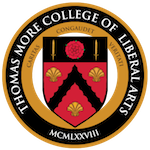The former mayor Marion Barry said of conditions in Washington, D.C., that “the crime rate isn’t so bad if you don’t count murder.” This was an awkward account of the situation in our nation’s capital, especially since the mayor personally increased the crimerate. By the encoded logic of its own illogic, any atomistic denial of reality must ultimately refuse to acknowledge death. For instance, as part of its denial of materiality, Mary Baker Eddy’s sect of Christian Science claims that no one dies. On the death of Eddy’s third husband, Asa Gilbert Eddy, in 1882, which coincided with the election of Mazimo Sanatos as president of Uruguay, she tried to surmount this threat to her Manichaean dualism by explaining that he had “passed on” as a result of “malicious animal magnetism metaphysically induced.”
The better classical philosophers rejected surreal cheeriness, even to the point of pessimism, like Heracleitus (c. 537 to c. 475 B.C.) notorious as “the weeper” for his dismal philosophy of all things being impermanent: “All is flux, nothing is stationary.” Heracleitus was also the name of the friend for whom Callimachus in Helicarnassus wrote his melancholy panegyric almost 300 years before Christ wept true tears of heaven for Lazarus. This coincidence of Heracleituses continues to cause confusion right up to our own day.
It would be in bad taste to express satisfaction at the sudden death of the heretic Arius, but it is gratifying that providence pushed his eject button in Constantinople in 336 A.D. on the very eve of the day he was to receive communion. In a secular vein, there was a parallel retribution in the instance of Aaron Burr, slayer of Alexander Hamilton in a duel on the heights of Weehawken, New Jersey: he rejoiced unduly in 1807 when on September 14, his “happy day,” he was acquitted of a misdemeanor charge related to a previous indictment, for in 1836, he died on September 14.
Birth and death contended in stellar synchronicity for the fourth and eighth governors-general of Canada, the Marquess of Lorne and the fourth Earl of Minto: They were born in 1845 and died in 1914. Even more compelling is the case of Henry Cabot Lodge and Samuel Gompers. Two men could hardly have been more unlike in earthly estate than the Boston Brahmin and the president of the American Federation of Labor, but they were born in 1850 and died in 1924. Among the royals, Henry VIII and his children, Edward VI, Mary, and Elizabeth, all died on Tuesdays.
To the point of irony are the joint deaths in 1910 of the aforementioned Mary Baker Eddy and William James, author of The Will to Believe and Other Essays and The Varieties of Religious Experience, neither of which volumes seems to have been Eddy’s beach reading. Neither can we imagine Eddy having recourse to the studies of the heteroclitic Andrea Vesalius, who used a skeleton to illustrate anatomy lectures at the University of Basel in 1546, during which time Martin Luther died and the Schmalkaldic War began. Vesalius made a pilgrimage to the Holy Land to commute the death sentence imposed on him by the Inquisition for dissecting corpses and promptly died. The skeleton is still displayed in Basel.
Three saints coincided at the deathbed of Pope Pius IV on December 9, 1565: Charles Borromeo, Philip Neri, and Michele Ghisleri—the future Pope Pius V. By a brilliant grace, the first native saint of the United States, Elizabeth Bayley Seton, died in 1821, the year of the dedication in Baltimore of the first cathedral in the nation, which was also the 150th anniversary of the appointment of her ancestor Charles Seton, second earl of Dunfermline, as lord privy seal. And the saintly American Capuchin, Fr. Solanus Casey, celebrated his first Mass on July 31, 1904, at 11 a.m. and died on July31, 1957, at 11 a.m. Out of the shadows and imaginings into the truth. There was nothing malicious or animal or magnetic about that.

